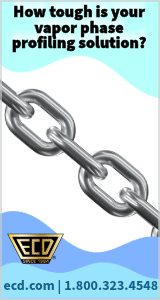|

|
|
| Ask the Experts | |||||||
|
|||||||
|
October 5, 2011 - Updated October 3, 2011 - Originally Posted Ways to Remove Silkscreen Ink from Pads?Can you recommend a non destructive way to remove silkscreen ink, or legend, from component pads? D. C. |
|||||||
| Expert Panel Responses | |||||||
|
Removing ink is not different than removing solder paste, that is, if the ink is UNcured. However, if the ink is cured, then the best bet is to attempt to dissolve and remove the ink chemically. If the ink is epoxy based, this will be difficult to do, but not impossible. Hopefully this is not something that you need to do on a regular basis. There are strong, yet safe, immersion cleaners with high solubility parameters, such as those based on the orange terpene cleaners (Citraflor EG-3 or Bioact SC-10) and compounded with few other solvents. These solvent blends work especially well, and are safe to use on CCAs, connectors, and metal parts and assemblies. They are hydrocarbon-based, flash points over 100 deg F, do not require heating, and do not create wastewater. If you do NOT want to go the chemical route for cleaning, you may be able to try "pencil erasers" ... specific types exist for cleaning pads and you should consult your electronic assembly distributor for samples. These pretty much abrade the surface of the pad or other part of the assembly and remove the ink in a physical manner. I hope this helps.
President Chem Logic Rick Perkins is a chemical engineer with more than 33 years of Materials & Processes experience. He has worked with Honeywell Aerospace in high-reliability manufacturing, as well as with several oil-field manufacturing companies. He also has a good understanding of environmental, health, and safety regulations.
Sometimes simple is better. We've used a combination of techniques including an knife tip or probe to scrap the ink off as well as an eraser. It is obviously a tedious but necessary process.
Sales Engineer Circuit Technology Center Mr. Price has been a key member of the team at Circuit Technology Center since 1985. He has vast expertise, experience and understanding of complex circuit board rework, repair and modification operations. He is one of the most knowledgeable experts in this area across the globe.
|
|||||||
| Submit A Comment | |||||||
|
Comments are reviewed prior to posting. You must include your full name to have your comments posted. We will not post your email address. |
|
Free Newsletter Subscription
Circuitnet is built for professionals who bear the responsibility of looking ahead, imagining the future, and preparing for it. Insert Your Email Address |
|

|




